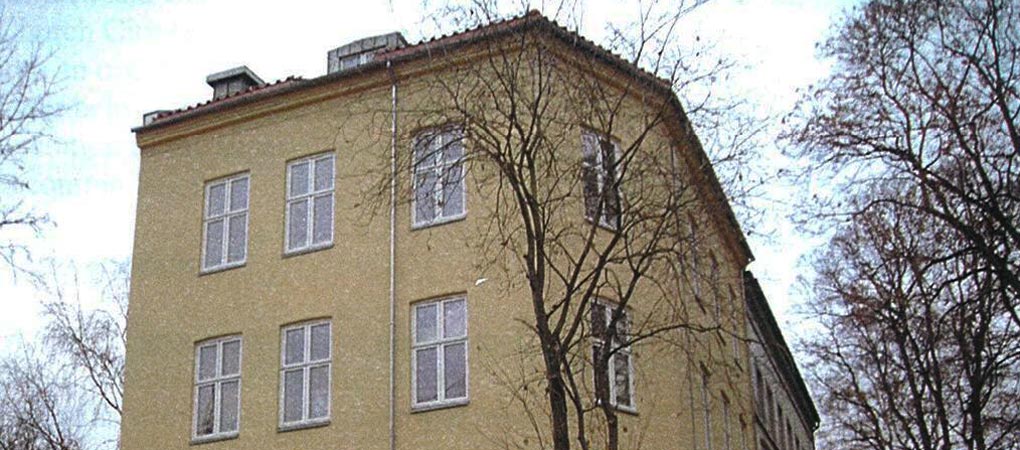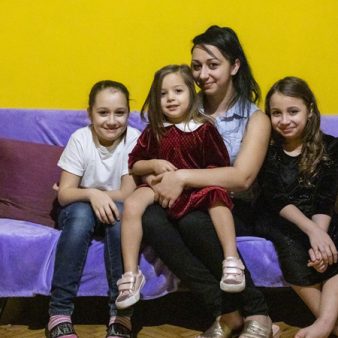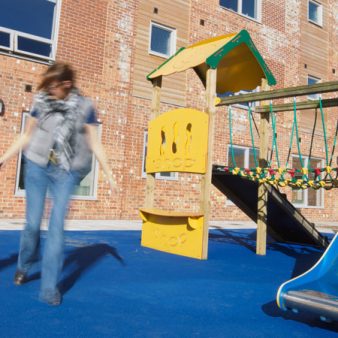Developed by the local housing authority, this project meets the needs of extremely vulnerable street dwellers, providing highly specialised housing to meet their complex and acute needs. It was developed in collaboration with a range of different partners in the city, including the homeless persons themselves. Recognising and respecting these unusual lives, there are no requirements in terms of sobriety, rehabilitation or employment. Over 150 dwelling units have been developed in six different projects and all residents now have much more stable lives, with shorter spells of hospitalisation.
Project Description
Aims and Objectives
The overall purpose of the project is to identify and address the needs of extremely vulnerable and homeless persons in St. Hanshaugen. It is recognised that although this is a comparatively small group numerically, they have the right to have their needs addressed.
Context
The housing standard in Norway is uniformly high, and the number of homeless people is low compared with most countries. Nonetheless, it has been recognised that there is a need for a strategic public effort to combat and prevent homelessness, particularly when it is associated with poor mental health.
Although attempts have previously been made to house vulnerable people with multiple problems in St. Hanshaugen, the accommodation had not been appropriate for their particular needs and they continued to sleep rough, living in tents or under railway bridges. Problems experienced include severe and multiple mental health and psychiatric needs as well as substance abuse. Many people do not want treatment and avoid all contact with support services, and in some instances, living with others adversely affects both their physical and mental health. As is common elsewhere, these various groups were seen as having uniform needs and the city provided an identical response, whereas in fact individuals experience a wide range of different problems and being treated inappropriately only served to further break down their dignity.
Project details
The approach pioneered in the St. Hanshaugen District of Oslo accepts and tolerates ‘unusual’ people and seeks to offer a range of provision to match their needs. There are six individual projects developed to reflect the variations in need identified. These are:
- Fredensborg Accommodation Centre provides 66 bed-sits in two renovated buildings for homeless persons and ex-prisoners, 40 per cent of whom have both a mental disorder and substance abuse problems. The accommodation is not permanent and support is provided to help residents obtain appropriate permanent accommodation. The average stay is six months. Supervision is provided according to individual needs.
- Ullesalsveien Residential Centre provides eight permanent accommodation units (one room plus private bathroom and kitchenette) for persons with serious behavioural / violence problems who are leaving long-term psychiatric care. Extensive training in the highly specialised skills necessary to provide support to this group is an important part of the Centre’s work, as there have been major skill shortages in this area in the past.
- Schwensensgate Accommodation Centre provides temporary accommodation for 50 newly arrived refugees with support to help them settle into the country. A wide range of support is provided including collection from the airport, advice and support and finding permanent accommodation. Apartment sizes range from 26m2 – 84m2 and the average stay is seven months.
- Grefsenlia Housing provides permanent accommodation for 12 people with serious mental health problems who have a lifelong need for services from specialist psychiatric health care services. The aim here is not to eliminate admissions to psychiatric care but to avoid unnecessary and prolonged stays in psychiatric wards. The innovative approach used here is the collaboration between health providers, housing services and the residents to ensure a seamless and appropriate provision of both health and housing care.
- Schandorffsgate provides 11 permanent apartments with low levels of support, helping people with a double diagnosis of substance abuse and mental disorder who have previously been unable to maintain permanent living arrangements. Low staffing levels reduce agitation for residents who find it hard to relate to more than a few familiar faces. Formalised management agreements have been pioneered here to ensure coordination between the different service providers involved.
- Flexbo consists of five small mobile homes (wooden chalets 30m2 in size) arranged in a cluster, to meet the needs of those who have been living on the streets and have found it impossible to live in shared accommodation or near to other people. They are often some way away from other settlements, to meet with resident’s wishes. Damage to property is accepted as normal and design standards are developed accordingly. The houses cost US$50,000 each and can be easily relocated if needs be. The first of three clusters is occupied and the second cluster opened in March 2008.
All projects are staffed at an appropriate level by staff with a daily responsibility for the residents and their well-being. Since the level of support provided is a contentious issue for many residents, the most appropriate form of support was discussed with them in advance. There are no requirements regarding sobriety, rehabilitation or employment. A common request is to be spared ‘all that socialisation’ and care is taken to ensure that these preferences are respected.
These projects are the result of collaboration between many stakeholders in the city. These have included potential residents, voluntary organisations, students from the Oslo School of Architecture and Design, Norwegian armed forces engineers, Government agencies and departments and the Norwegian State Housing Bank.
Covering costs
The projects received national funding for the initial capital costs of construction and set up, after which the projects have been expected to be self-financing from rental income. Funds continue to be received from the city of Oslo and the District Administration. Although the projects are designed to be self-funding from the rental income, not all of them have achieved this, particularly those where there are high staffing levels. All residents pay rent which is either deducted from their disability benefits, or if they do not receive these, they are provided with housing benefit to meet these costs in full.
Accommodation for the disadvantaged is a major national commitment and the Norwegian State Housing Bank has continued to provide capital funds for similar housing projects providing permanent accommodation, as well as giving reasonably termed loans to the city districts.
Impact
- People who previously could not live in permanent accommodation are now able to do so and none of the residents have returned to living on the streets.
- There is an increased recognition and understanding of the need for providing individualised housing and care provision for people with very complex and acute needs.
- The projects have inspired other district administrations and municipalities to think creatively and venture into non-traditional accommodation types. This has led to changing in local funding priorities.
- The projects have reduced the time spent by residents in psychiatric hospitals. For example, in 2005 for the 11 residents currently living in Schandorffsgate there were 25 emergency admissions and a total of 99 days of hospitalisation. In 2007 there were 12 emergency admissions and 58 days of total hospitalisation (41 of which related to just two residents). In Grefsenalia, similar reductions were seen with 102 days hospitalisation reducing to just eight.
- Increased stability of the residents has allowed reduction in staffing levels, which in turn has reduced operational costs.
Why is it innovative?
All of the projects address a similar theme of meeting the needs of the most vulnerable groups in society and have the following key innovative aspects in the approaches developed:
- Recognising and respecting those who live ‘unusual’ lives and providing support to improve the quality of that life, whilst understanding that many of the issues faced will not be ‘solved’ but rather need to be accommodated.
- Providing accommodation to meet housing needs in a range of different ways, accommodating unusual behaviour – small houses, unusually low levels of support, robust interiors, and tolerant neighbourhoods.
- Improved collaborative working methods between the city housing and welfare support and health services and reaching recognition that these needs should be met and are a joint responsibility of the city authorities.
What is the environmental impact?
The Flexbo houses are small, made primarily from local timber, and therefore have only a light environmental impact. Other accommodation is developed by converting existing buildings or new construction. All projects are developed using the high environmental standards required by the Norwegian building regulations and wherever possible environmentally friendly solutions are used for all installations and technical aspects of the design.
Is it financially sustainable?
There is both national and local government commitment to these projects, none of which could be developed without this support. It is intended that the running costs should be self-financing from rents and this has been achieved to date in four of the six projects. However, since virtually all rental payments are supported entirely by government subsidy, this concept of self-financing is somewhat limited. Some savings have been achieved as the number of days residents spend in very expensive psychiatric hospital care is reduced.
Residents are provided with opportunities for paid employment on some of the projects and two of the five Flexbo residents have been involved in working on the plot around their houses, tidying and preparing the land. Where appropriate, residents are encouraged to take part in the national government scheme enabling them to work tax-free for a certain number of hours per week as and when they are able to or wish to. However, given the nature of some of their disorders, this may not have more than a marginal impact on residents’ income. Providing accommodation that is suitable to residents’ highly specific needs has meant that they now have access to accommodation that they can consider a permanent home, often for the first time in many years.
What is the social impact?
The projects provide conditions that enable residents to become integrated within their local communities if they wish to, such as invitations to local events where appropriate. For many residents however, meeting their fundamental needs takes most of their physical and mental energy and there is little inclination or capacity to interact with the local community. Opportunities are limited in some cases as the houses are deliberately isolated from local communities to meet residents’ needs and wishes. For the most violent residents, integration in the local community is not easy, as they cannot go out alone and always have to be accompanied by at least two members of staff. For the families living in Schwensensgate who are primarily refugees, integration with local communities is vitally important. They receive lessons in the Norwegian language, culture and society during their stay and are thus in a much better position to integrate themselves into the local community, when they move into their permanent accommodation. The Flexbo residents have the right to vet anyone coming to live in their cluster of mobile homes.
All residents are now much healthier and safer, since they are not sleeping rough and are receiving appropriate support to help them cope with the daily problems they face. Safety of the residents was a key consideration in the design of the accommodation and features such as underfloor heating, sprinkler systems, automatic back-up in case of a power cut, robust fittings and furniture were included to reduce risk of accidents.
Regular monitoring has provided evidence that the skills and abilities of the residents are increasing, as shown by the fact that they are coping with the degree of independent living. There has been a marked increase in the well-being of the residents. For example, the residents in Schandorffsgate have increased their awareness of their own health situation and are able to recognise when they need to be admitted to a psychiatric ward in hospital. One of the residents has also been able to move into his own flat after a year in the project as his confidence and abilities had increased sufficiently to enable him to do so. Residents in the Flexbo houses have started planning their future, with a degree of calmness and confidence that they did not previously have.
Attitudes and thoughts about the future have begun to change. One of the residents has started working, one has applied to be accepted for the Methadone project and has started attending the ‘Motivation Clinic’ and one has voluntarily admitted himself for detoxification because he wishes to stop his substance abuse. There are many more opportunities for the residents in society than there used to be. There is an increased recognition of residents’ skills and abilities, which has resulted among other things in the ‘Self-Builder Project’ where the residents are offered practical work training and full tenancy rights, provided they decorate and renovate the flats themselves.
Barriers
- Lack of suitable existing accommodation to meet the specific needs of this group, which meant that it was necessary to develop new housing or convert existing buildings to ensure that the accommodation is suitable to meet the residents’ specific needs.
- Procuring suitable plots of land in Oslo proved very difficult for the new build projects, due either to the proposed plots being in difficult locations or to political opposition in the localities involved.
- A common problem experienced in all of the projects was the lack of coordination between the different levels of government and the different departments involved in the project. Partnership working over a period of time has helped to address these problems.
Lessons Learned
- Residents have different priorities, for example in the Flexbo houses, some residents choose to have no white goods and only one of the five residents uses the bedroom.
- Services should be developed solely for women residents, as it is recognised that they are more likely to benefit from supervision if they can be a little shielded from male-dominated substance abuse circles.
- There is a very fine line between the resident’s perception of liberty and his/her perception of loneliness, illness and fear.
Evaluation
Careful data gathering was carried out before the start of the project in order to provide accurate baseline data to be able to assess the impact of the project in the future. On-going monitoring of key indicators in relation to resident welfare is carried to understand whether the care is reflected in fewer days in hospital, shorter lengths of stay etc.
Transfer
The project leaders have carried out extensive work in providing information and giving lectures about their work. The Flexbo scheme is now moving onto the second cluster in the project. Within the Oslo Municipality, several district administrations are already planning similar projects to Schandorffsgate and the collaboration agreement developed for the Grefsenalia Project has been used for other groups of people with mental disorders and has now been implemented in hospitals in other districts of Oslo.
Therapeutic and treatment solutions developed at the Ullevalsveien Centre for those with severe violent disorders have received national professional approval.



